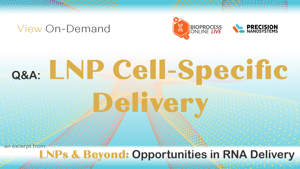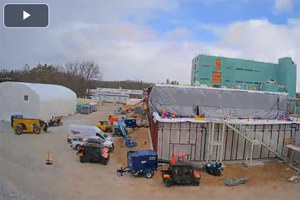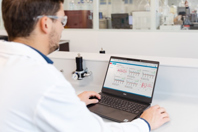MANUFACTURING ARTICLES
-
Beyond The Hype: How 2025's Successes & Realities Will Shape mRNA In 2026
Here, in part two of this multi-part series, we hear from Melissa Bonner, CSO of nChroma Bio and Andy Geall, CDO of Replicate Biosciences, who call attention to several developments of the past year they’ve been watching and how they see these developments informing our conversations about and work with mRNA in 2026 and beyond.
-
To Fight Cancer, Gene Editing Needs To Solve Its Delivery Problem
The choice of delivery dictates the complexity of manufacturing, which in turn determines the eventual cost and accessibility of the therapy.
-
Striking The Right Balance: The Critical Discussions Driving The mRNA Industry's Next Chapter
Now, I cannot claim that I or any of the panelists at CASSS have or had access to a real crystal ball that will show us the future. However, what did come through these discussions loud and clear is that the future of our industry must include “balance.” Here, I’ll unpack a few ways the theme of “balance” presented itself — and no doubt will continue to present itself in the future — as well as how the panelists see us achieving this necessary balance.
-
Trends In Oligo Scale-Up & Delivery & How They're Impacting Manufacturing
Here, a panel of experts at the RNA Leaders Conference gives a fantastic overview of where we are today and why, as one expert so nicely put it, “This is one of the most fun times to be an oligo scientist or chemist.”
-
From Misinformation To Medicine: Forging Bipartisan Support to Reverse Anti-mRNA Policy
In this article, I’ll share some of the progress AMM has made and the barriers the organization/our industry is still facing in our efforts to reverse the policy decisions that have been made against mRNA today. Throughout the panel, the speakers also shared their thoughts on the types of messaging we should be considering and/or have started to see making an impact.
-
What You Should Know About USP's Bioassay Updates
The United States Pharmacopeia is overhauling general chapters to align them with current industry standards. One scientist on the project helps us unpack the changes.
ARTICLES, APP NOTES, CASE STUDIES, & WHITE PAPERS
-
Explore how Difco™ TC Yeastolate ultra-filtered (TCY UF) enabled over 100% improvement in titer for CHO cell culture through feed optimization and bioreactor scalability in a real-world application.
-
By following some of the best practices in freezing mRNA, you can effectively balance product quality, cost-effectiveness, process safety, and efficiency.
-
Before scaling up or out, developing and optimizing your process is crucial to reduce the risk of scaling your inefficiencies. Discover process development services designed to help meet your PD goals.
-
This eBook describes automation of continued process verification and offers a one-click solution for statistical trending of data, campaign reports, and annual product quality review.
-
Widespread application of pDNA in gene therapy is driving increased demand and as a response, plasmid manufacturing must become more efficient with improved productivity. Intensification of chromatographic steps can help address this demand and has led to an exploration of the use of convective media (monoliths, membranes, fibre based technologies).
-
This review suggests technical remedial options for the production of pDNA and focuses on mRNA synthesis, purification, and encapsulation.
-
Exploring the use of automation in cell therapy and advanced therapeutic medicinal product manufacturing to improve safety, quality, and compliance is a key factor in advancing patient care.


























